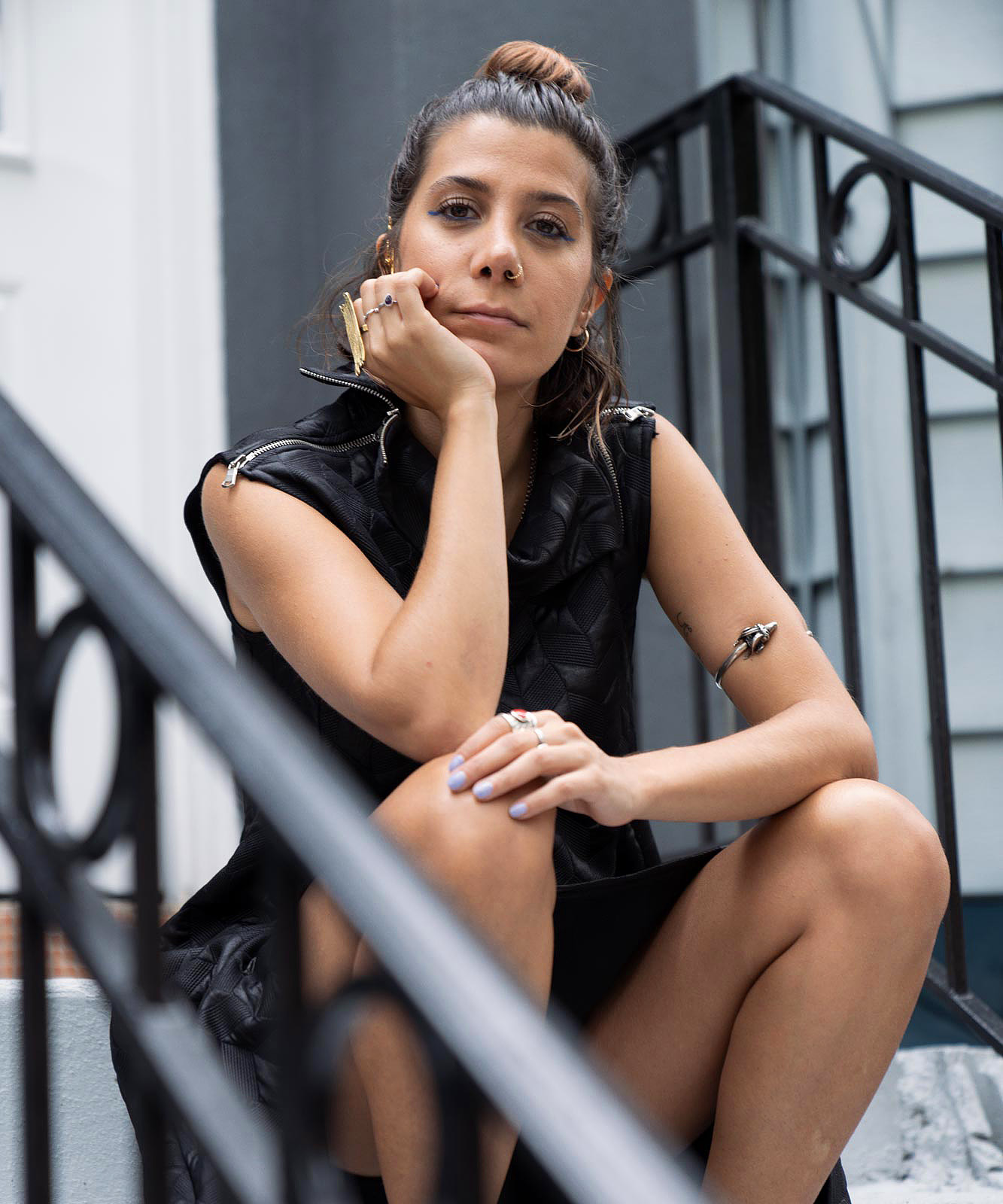We serve artists and the new eyebeam.org—always in process—offers a depth of exploration and content, including a directory of every artist who has received a fellowship or support from Eyebeam that we will continue to grow so eventually, artists can be searched by name, year, and program.
Art historian and art critic Cassie Packard, who explores the intersection of visual culture, queerness, networks, and worlding in her visual criticism and writing, has embarked with us on an ambitious quest to conduct oral histories with alumni; a selection of these will be highlighted regularly in Feed, which we hope adds to the sense of community and camaraderie among Eyebeam alumni, like Iranian artist Morehshin Allahyari, pictured, who told Packard: “I’ve always been interested in ways in which my work can go beyond the white walls of galleries and museums, and ways in which I can build spaces and platforms that other people can build on.”
We will regularly commission new, original writing and thinking in Feed, and Packard has contributed a lyrical, topical essay on renegade, socially concerned artists who have spent time at Eyebeam, oceans of data, and dreaming.
The new eyebeam.org is fast, lean, and responsive and made for viewing on any device, especially smaller screens; as Adam Squires at Chips told us recently, “it’s meant to be elastic to flex and stretch.” The site is also a visual departure for Eyebeam with a refreshed, clean presentation that includes a softer typography, warm hues and graphics that can be removed and read by screen readers, and an overall more spacious, organized, and friendly user experience.
We are grateful to our community of disabled practitioners, and the new eyebeam.org includes lessons learned from their innovations. We have long believed the ADA is the baseline, not the finish line, and we are committed to creating an expansively inclusive platform.
Eyebeam collaborates with organizations and networks that do the hard work of combating injustice, and we would like to see a more humane, more equitable approach to technology; to that end, our partnership with Underscore, a suite of zero surveillance software for artists and creatives, is proof of our commitment to moving past surveillance capitalism.
We are building on a youthful, adventurous legacy of firsts, and a new chapter has begun. From alumni to practicing artists, to activists and organizers, and to anyone interested in how we live today, we hope you will join us here. If you would like to participate in our member-driven platform that provides insider access to innovative artists from Eyebeam’s community, we invite you to enter The Fold. And as we continue to grow this space, we want your input so we can make it a resource for you to connect with our family of artists and technologists, as well as to our dedicated team working to build opportunities for groundbreaking thinkers, makers, and doers. Write to us at info@eyebeam.org.
In Packard’s essay, her inclusion of a terrifying remark by video artist Nam June Paik—“we’re in a boat in the ocean, and we don’t know where the shore is”—is serendipitous. We are announcing today an open call, here, for artists to respond to what we feel is a global tech emergency, as generative AI infiltrates our lives, and algorithms continue to marginalize underrepresented communities. “The flow of data through undersea cables that crisscross the globe has offered a previously unimaginable degree of interconnectivity and information; it has also made us vulnerable to scalable disciplinary and capitalist agendas, and given fodder to increasingly sophisticated artificial intelligence with a track record of perpetuating misinformation through generated text and images,” Packard warns. “We may be past the point of shores.”
For more, Executive Director Roddy Schrock writes in Feed about the ongoing transformation at Eyebeam and the new eyebeam.org.
